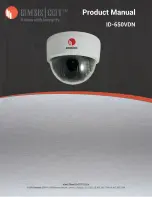
Chapter
3
Operating Instructions
ICR890 High-end CCD Camera System
38
©
SICK AG · Division Auto Ident · Germany · All rights reserved
8011325/0000/2006-10-24
Product description
Tracking operation
During the reading process, a
maximum of 10 objects
can be simultaneously situated, one
behind the other, in the tracking operation, i. e. the ICR890 System must be able to
unambiguously assign the read codes to the objects (
). A reading pulse sensor
controls initiation of the reading process at the start of the reading area as standard (see
Chapter 3.4.2 Object trigger control, page 33
), the end is determined by the object release
point. This also defines the size of the resulting reading area.
A regular pulse is required in order to track objects in the reading area. This is generated by
the external incremental encoder, which delivers a constant pulse at least every 10 mm
(394 mil) of movement in the direction of transport (see
). This allows the ICR890 System to generate a clear display of the
distance between the reading pulse sensor and the object release point. Any fluctuations
during startup of the conveyor technology or reductions in speed caused by heavy objects
are also detected. For clear separation of consecutive objects, a gap of at least 50 mm
(1.97 in) is required. Reading results for an object are displayed after the rear edge of the
object has passed the object release point. Alternatively, the reading process can be
initiated by a command string via the data interface.
The reading operation mode and object release point can be configured using the SOPAS-
ET Configuration Software:
P
ROJECT
T
REE
, ICR890, P
ARAMETER
, D
ATA
PROCESSING
, register tab T
RACKING
Fig. 3-12:
Reading operation modi of the ICR890 System in stand-alone operation
Start/Stop operation
Tracking operation
Trigger 2:
Stop
Trigger 1:
Start
Trigger 1:
Start
Reading area
Data
output
Data
output
Re
adi
ng ar
ea
















































